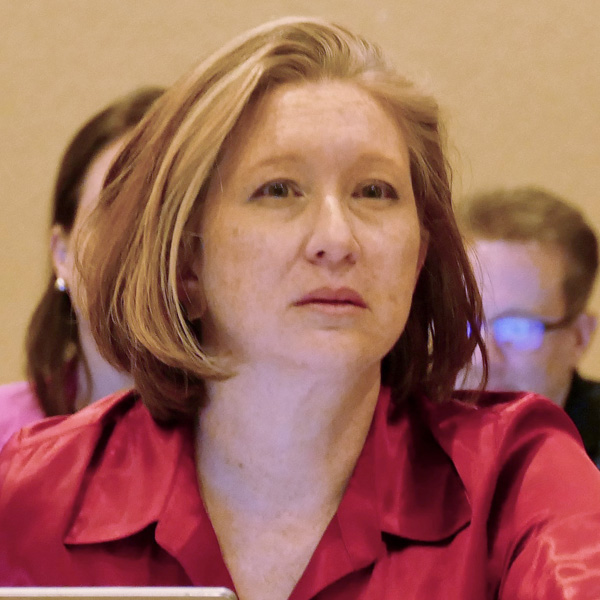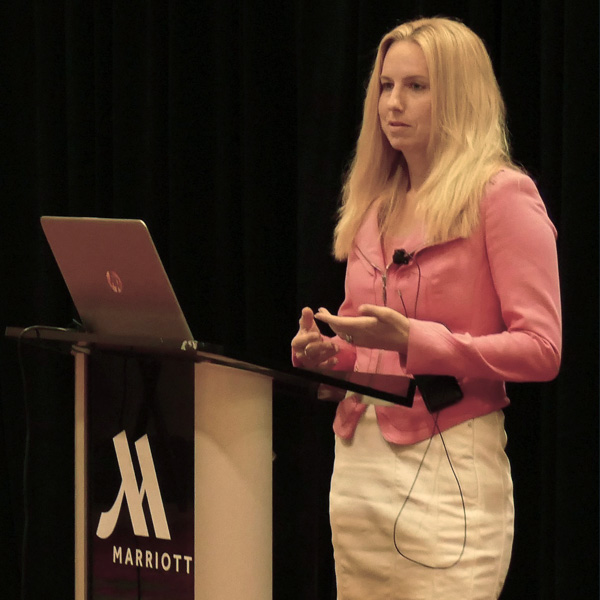MISO’s Board of Directors voted unanimously Monday to approve the 18-project, $10.3 billion first phase of its long-range transmission plan (LRTP).
MISO Director Todd Raba called the July 25 open session of the board “one of the most important meetings” of his tenure.
MISO Vice President of System Planning Aubrey Johnson called it a “distinct honor” to summarize the plan a final time before the board greenlit it.
He said the portfolio will help MISO members ensure they can achieve their clean energy goals, “accommodate the rapid portfolio shift that’s well underway” and shore up the system as more extreme weather lashes the footprint.
Most of the projects’ routes use existing rights of way from other lines. The grid operator estimates the lines will be in service between 2028 and 2030 and deliver at least $37 billion in benefits to ratepayers from 2030 to 2050. The first LRTP portfolio is considered a late insert to MISO’s 2021 Transmission Expansion Plan. (See MISO Puts Finishing Touches on $10B Tx Plan, Hunts New Projects.)
To shape the transmission plan, MISO held more than 200 public stakeholder meetings over two years, some of them standing room only, Johnson said.
The portfolio is premised on MISO’s estimate that 58 GW of primarily coal resources will retire in the footprint within two decades, while the RTO adds 90 GW in solar, wind and natural gas generation, bringing its total installed capacity to about 160 GW.
MISO said the lines will result in a minimum 2.2-to-1 benefit-to-cost ratio across all its Midwestern transmission planning zones. MISO didn’t analyze its South region’s transmission needs for the portfolio and won’t for at least a year.
More ‘Urgency’ Needed
Several stakeholders took advantage of an open comment period at the end of the meeting to urge MISO to get a jump on more future-looking system planning.
Clean Grid Alliance’s Natalie McIntire said the need for the lines has never been more evident than during this heatwave-laced summer, when MISO strained to manage increased demand.
“This is not the time to stop planning. … It is just the first step in much-needed investment in transmission capacity nationwide,” she said. “We have more work to do to fully achieve carbon reduction goals and build a more resilient grid to withstand increased weather-related challenges.”
“Not only does MISO need this, but our nation needs this as a model,” Sustainable FERC Project Attorney Lauren Azar told MISO directors.
Azar urged MISO not to waste any time in planning the second, third and fourth iterations of the portfolio.
Invenergy’s Arash Ghodsian asked that MISO consider high-voltage merchant transmission planning, including the Grain Belt Express, in future long-range modeling and analysis. (See Invenergy Announces Grain Belt Express Expansion.) He called for a “more comprehensive and realistic view of the future system.”
MISO’s Environmental Sector said the portfolio is “critical, but there is far more leadership and urgency needed from MISO.
“Much more remains to be done to shift away from fossil fuels and quickly meet clean energy goals. Note that none of the benefits [in the portfolio] is being provided to residents and businesses in MISO South, which includes Louisiana, Arkansas, Mississippi, and a portion of Texas. The South is left out in this set of projects, despite the region’s dire need for greater resilience, clean energy deployment, and access to low-cost power,” the group said in a statement released ahead of the vote.
Environmental Sector members said MISO has been “subject to pressure from utilities like Entergy in the South — and others in the North — that have succeeded in delaying progress on long-range transmission lines.”
They said the “status quo, fossil-fuel-heavy” MISO grid is costing consumers, noting that about 500 solar, wind and hybrid project proposals have withdrawn from the MISO queue in the last five years.
The Union of Concerned Scientists (UCS) said the portfolio is a “significant first step toward building the modern, resilient, and reliable electric transmission system necessary to decarbonize the energy sector.” The group estimated that the lines will enable enough renewable energy to power more than 12 million homes.
James Gignac, senior Midwest energy analyst at UCS, called the vote “exciting progress, and only the first of several portfolios of investment that we’ll need to keep up with the drive to decarbonize and meet the challenges of climate change.”
MISO estimates the portfolio will keep 400 million metric tons of carbon emissions out of the atmosphere between 2030 and 2050.
“We appreciate the spirit of collaboration and the hard work that MISO members and stakeholders have invested in these projects and look forward to continued discussion around future tranches,” MISO CEO John Bear said in a statement following the vote. “We also recognize the effort and strong support for LRTP from various regulators and policymakers in the states — including state utility commissions and governors.”
The new portfolio is already at the heart of one FERC complaint. Last week, an alliance of consumer groups jointly filed to challenge MISO’s practice of respecting state rights of first refusal (ROFR) laws in its regional transmission planning. The consumer alliance asked FERC to block MISO and other RTOs from applying “anticompetitive” state ROFR laws to their regional transmission planning, including the long-range portfolio. (See related story, Consumer Groups File FERC Complaint Against MISO.)
MISO estimates just $1 billion of its $10.3 billion LRTP portfolio will ultimately be open to competition. The grid operator said nearly $4 billion worth of the projects are considered upgrades to existing facilities, while another $5.5 billion worth of projects will be sited in states that have enacted ROFR legislation.
Tx to Bring Capacity Online, but Will it Solve Crisis?
The transmission approval also comes as MISO is facing heightened scrutiny from its Midwestern states over a capacity shortage in the entire MISO Midwest region, which some say is partly due to insufficient transmission to connect the 806 mostly renewable projects totaling 126.3 GW in its interconnection queue.
The Organization of MISO States is considering the Independent Market Monitor’s recommendation that MISO replace its vertical capacity demand curve with a sloped curve to incent new resources. (See MISO Warming to Patton’s Sloped Demand Curve.) In a July 18 OMS board meeting, Executive Director Marcus Hawkins said OMS members heard a “menu of options” on auction and energy market changes during closed-door meetings during MISO’s June Board Week in Indianapolis.
Illinois lawmakers last week blasted MISO over failing to bring renewable generation online faster through its interconnection queue. (See related story, Illinois Leaders Blast MISO Inaction on Capacity Crisis.)
And the Illinois Commerce Commission (ICC) last week directed Ameren Illinois to perform a cost-benefit analysis of remaining in MISO versus departing for PJM or another grid operator (22-0485). Chair Carrie Zalewski said the ICC feels it “appropriate to explore whether membership in MISO continues to provide net benefits to Ameren Illinois’ electricity customers.”
Citizens Utility Board of Michigan Executive Director Amy Bandyk called it “good news that MISO is overcoming barriers that have blocked new transmission lines for years. A more connected grid benefits ratepayers by enabling lower-cost renewable energy to flow to where it is needed, improving the reliability of electric service.”


